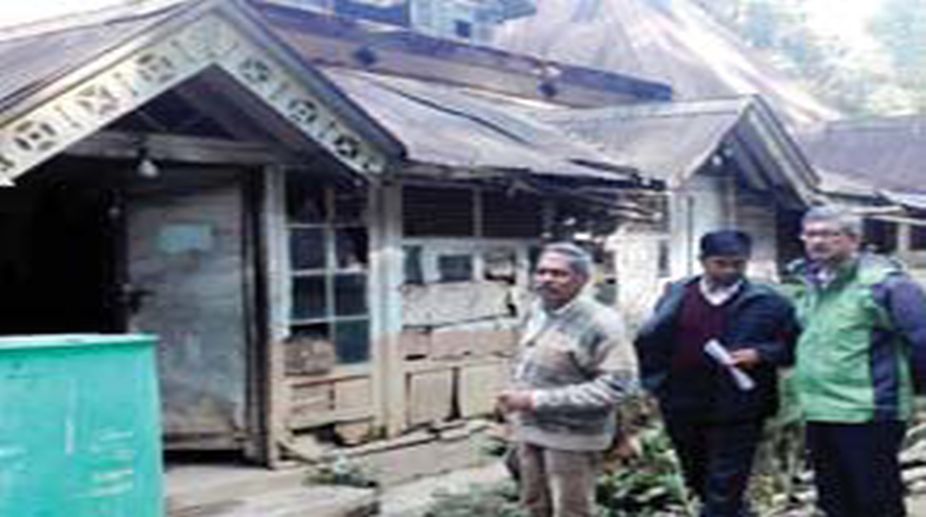5 tourists from Burdwan killed in road mishap in Gujarat
Five tourists from Burdwan were killed in a road accident in Gujarat yesterday evening.

Gauripur House
After the Katherine Graham Memorial Church, West Bengal’s heritage commission has added four more sites in Kalimpong district to its heritage list, even as it declared a total of 13 new heritage sites across the state recently.
Important historical places like the Dalim Lepcha Fort, Damsang Lepcha Fort, Chitrabhanu and Gauripur House have now been given the much-needed heritage tag, a move seen by local people here as something that will certainly help draw more tourists to the area, and as such, aiding in the areas’ overall development.
Advertisement
Confirming the development, a member of the West Bengal Heritage Commission and the Chairman of the Mayal Lyang Lepcha Development Board, LS Tamsang, said, “I strongly believe that the heritage status for the two forts will benefit locals of Gourubathan, Pedong and Algarah. I am very happy that I have been able to work on these for the betterment of Kalimpong and Darjeeling.”
Advertisement
The Dalim Lepcha Fort in Gorubathan, around 90 km away from Kalimpong town, has its own significance for the Lepcha tribe as they believe that their King, Gaebbo Achyok, had defeated the King of Bhutan when the Bhutanese had invaded Gorubathan.
History also has it that a Bhutanese General had sent his messenger to King Achyok, seeking friendship and it was in Dalim Fort that the two sides signed a treaty. The Damsang Lepcha Fort has a similar story.
Built-in 1690 at an elevation of 6,300 feet, it is located at a distance of around 16 km Northeast of Kalimpong town towards Pedong. It is believed that Damsang Fort was the last home of King Achyok.
On the other hand, a tourist’s visit to Kalimpong is not complete until he goes to Gauripur House, the place where the great Indian poet, Rabindranath Tagore, spent several moments and wrote some of his masterpieces.
It is learnt that the bard stayed in Gauripur House at Durpin Hill, around 3.5 km away from the town, for almost 52 days since he first came to Kalimpong in 1938.
“Tagore’s stay in Kalimpong is something that everyone should be proud of. He was a poet not only for Bengal or India, but for the whole world,” Mr Tamsang told this correspondent.
“According to heritage status to such significant places and restoring them will introduce Kalimpong and Darjeeling districts to the world, as Rabindranath Tagore’s name has left an indelible mark in the world of literature, and tourism will surely flourish,” he said.
Tagore had a less and indirect connection with Chitrabhanu, another structure located at Atisha Road, around 2 km away from the town, as it was Rathindranath Tagore, (Tagore’s son) and Pratima Devi (daughter-in-law) who stayed there for a long time.
However, in 1942, Chitrabhanu was registered in the name of Pratima Devi, whereas Rathindranath was involved in the construction. Pratima Devi stayed here till 1964-65.
It is learnt that the building was constructed by Tagore’s son and daughterin- law with a sole purpose to train local women in art and craft. Chitrabhanu is currently under the Kurseong Polytechnic College and vocational training courses there end once in every three months.
DC Roy, the president of the Milani Club, which has been pressing the government to confer heritage status on Gauripur House and Chitrabhanu, said most of the things in the houses are still intact, and they can now be preserved better.
“Tourists come here and it will be better if Gauripur House and Chitrabhanu are converted into museums,” Mr Roy said. Bhim Kumar Gazmer, the peon at Chitrabhanu, said the old furniture in the house was bought by Rathindranath and Pratima Devi during their stay.
“After 1964, the couple handed over the building to the Government of West Bengal, and various vocational training courses are still imparted here. Tourists flock to this place, but they always complain of the lack of conservation efforts, and some scold us at times,” he said.
All the four sites are believed to be damaged in several earthquakes over the years, mostly in the one that struck the region in 2011, and need extensive restoration work.
Advertisement
Five tourists from Burdwan were killed in a road accident in Gujarat yesterday evening.
The festival, now in its ninth year, was held at the heritage town of Ramgarh Shekhawati in Rajasthan, a place known for its old havelis, forts and chhatris.
Mahakumbh 2025 showcases the double-engine government's commitment to heritage and development. In line with this vision, Indian Railways is leaving no stone unturned to ensure seamless travel for pilgrims through efficient crowd management and a record number of fair-special trains.
Advertisement
